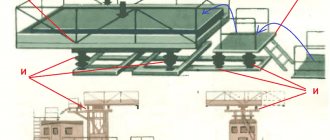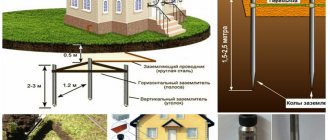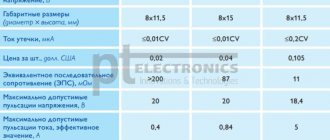The occupational safety action plan is a local document of the organization, which is approved by the employer. It consists of events planned in advance in a certain sequence that need to be implemented in the organization in order to bring labor protection into compliance with legal requirements.
Sample “Occupational Safety and Health Action Plan” List of Occupational Safety and Health Measures (from Order 181n)
How are occupational safety measures regulated?
Occupational safety measures are regulated by Order of the Ministry of Health and Social Development of Russia N 181n “On approval of the Standard List of measures annually implemented by the employer to improve working conditions and safety and reduce levels of occupational risks.”
Order 181n lists all possible labor protection measures, which is why they are called standard. Conventionally, they can be divided into organizational sanitary and technical.
The title says “annually implemented,” although some of them do not need to be carried out anew each time (special assessments of working conditions and training are valid for more than a year).
The sequence of their execution is arranged in accordance with priority. Most often, only a small part of this list is sold. It all depends on the specifics. The more complex and dangerous the industry, the more of this list is necessary for implementation.
Therefore, a specific list of measures to improve working conditions and safety and reduce levels of occupational risks is determined by the employer based on the specifics of its activities.
It is important to note that the planning of occupational safety measures is provided for by standard regulation 438n dated August 19, 2016 for the implementation of the functioning of the occupational safety management system at the enterprise.
The most important occupational safety measures
Legal measures – provision of documentation, which includes regulations and local documentation on labor protection of the organization. This is the conclusion of individual employee contracts, lists, orders, regulations, etc.
Socio-economic measures - includes compensation to employees for accidents, compulsory insurance, payment of labor benefits to employees with whom the employment contract has been terminated, provision of benefits to employees working in hazardous work, etc.
Organizational and technical measures - creation of an occupational safety and health management system (OSMS).
Sanitary and hygienic measures – ensuring a reduction in the level of exposure to hazardous and harmful factors on enterprise employees, creating favorable working conditions.
Treatment and preventive measures - medical examinations and psychiatric examinations, provision of proper nutrition to workers involved in hazardous work.
Rehabilitation measures – ensuring the speedy restoration of working capacity of an employee who has had an accident or who has received an occupational disease.
How to develop an event plan for the year?
What need to do? First, analyze the expenses of previous years, make a list of all upcoming occupational safety measures, and calculate the cost estimate for these activities. Based on this information, develop and approve a labor safety action plan with management.
Sequencing:
1. Write down all possible activities that may be in your organization from Order 181n “Standard List of Activities”.
2. Ask the accounting department for the costs of the current year’s events in order to more accurately predict the events for the next year
3. Ask the HR department for a list of current employees and plans for hiring new ones in order to predict activities for them (training, briefings, medical examinations, etc.).
4. Talk to department heads. Find out what changes have taken place in the field of labor protection (workwear has worn out, pro-free allowances have increased, etc.). Find out what your plans are for next year (purchase of new equipment, adding new employees, etc.).
5. Familiarize yourself with the documents in which labor safety measures are implemented : professional assessments, special assessment cards, regulations of supervisory authorities, etc.
6. Make a final list of activities in order of importance. First, indicate the mandatory ones - training, preliminary and periodic medical examinations, special assessments, then the optional ones - purchasing a stand, new collective protective equipment, etc.
7. Make an estimate of labor protection costs:
- All organizations, with the exception of government ones, are required to spend at least 0.2 percent of the cost of producing their products on labor protection measures. (Article 226 of the Labor Code of the Russian Federation). Therefore, ask the accounting department for the costs of production for the last year.
- Ask your planning department or accounting department about budget planning to find out how the budget is planned in your organization as a whole.
- Assess the cost of material assets that will have to be purchased, as well as the cost of services from third-party organizations in the field of labor protection. You should know how much personal protective equipment, fire extinguishers, safety devices, worker training, special assessments, etc. cost.
8. Develop and approve with management a plan of occupational safety measures based on the list of activities and cost estimates. According to standard provision 438n on OSMS, the plan should include:
- results of working conditions;
- list of events;
- responsible persons;
- the timing of each event and what results are expected.
It is necessary that the action plan be recorded on paper and approved by the employer. However, there is no approved form as such, so it is formed in free form. The main thing is that it is understandable and meets current needs. It may contain both the name of the event and the calculation of the financial component. It all depends on how work is organized within the organization.
The fine for the absence of a labor safety action plan ranges from 30 to 90 thousand, or suspension of the company’s activities for up to 90 days. (Article 5.27 of the Administrative Code)
Event plan example
Below is an example of an action plan for website promotion. Naturally, this is just an example, the events were not thought through carefully, but it gives an understanding of the appearance. Only some points are indicated for example; there are no important KPI indicators. It is worth remembering that achieving a goal can be influenced by a complex of factors, both external and internal, and all of them should be taken into account.
| Target | event | term | resources | responsible | Expected Result |
| website revenue growth by 50% in 2021 | Daily publication of at least 3 news | daily | budget 15000r | Pupkin V.P. | ensure traffic growth of 30% per month |
| change the location of advertising blocks | until 01.12.2015 | negotiate with the programmer | Ivanov I.I. | CTR with YAN 0.8 | |
| Provide weekly newsletter to subscribers | weekly | plan time, 1 hour per week | Ivanov I.I. | at least 1000 clicks per week from emails | |
| Promotion to the TOP 3 queries in the TOP 20, at the expense of link companies, at least 20 queries monthly | monthly | 5000r/month | Ivanov I.I. | increase in traffic from promoted queries by 1000% |
I would like to note that the appearance of the table is far from mandatory. The fact is that some events require a lot of description and they will not look readable in the table. The main thing in terms of events is its content.
Example of a simplified occupational safety and health action plan for an accounting firm
When developing an occupational safety and health action plan, many factors must be taken into account. Let's start from the very beginning of the office. The organization has just registered. He rents an office and begins moving into it and recruiting staff.
The action plan might look like this:
1. Fire safety measures:
— preparation of an evacuation plan; — purchase of fire extinguishers; — maintaining related documentation; — purchasing signs and “Exit” signs in case of fire evacuation; — development of a fire safety training program; — appointment of those responsible for the premises.
According to the law, the owner is always responsible for the premises, but very often the landlord shifts part of the responsibility to the leasing organizations. The above is a list of the most common events that rental organizations face. Therefore, when choosing a room, you need to take this point into account.
If the owner of the premises is the employer himself, then care must be taken to ensure that the premises meet fire safety requirements (presence of warning systems, serviceability of fire hoses, unhindered access to emergency exits, and so on).
2. Organization of a preliminary medical examination for hired employees (if necessary), as well as psychiatric examinations and pre-departure medical examination (if necessary).
From May 24, 2021, such examinations were canceled for office employees, however, if the company has a driver, then such examinations are necessary for him (psychiatric and pre-trip). The same applies to other non-office specialties, if they are included in the organization’s staffing table.
3. Conducting a special assessment of working conditions.
— determination of the list of workplaces subject to SOUT; — concluding an agreement with a certified organization; — assistance to the organization in the process of conducting a special assessment; — submission of reports on the results of the implementation; — familiarization of employees with the results; — organization of events recommended based on the results of the special assessment.
Carrying out this event will allow us to determine working conditions. Including the materials of the special assessment of working conditions, based on its results, there will be a list of recommended measures that you can add to the plan for the next year (for example, replacing lamps with brighter ones, etc.). However, if everything is in order at the workplace, then there will be no activities in the SOUT materials.
4. Organization of the necessary training on labor protection for managers and employees of the organization (HSE, HSE, civil defense and emergency situations) in accordance with the internal structure of the organization.
In this case, you send for training the general director, heads of structural divisions and other responsible persons who will directly monitor compliance with labor protection requirements and, thanks to the training, will have the opportunity to conduct briefings.
5. Creation of local regulations and documents:
— OT management system; — orders appointing those responsible for various issues related to labor protection; — training programs; — labor protection instructions; — accounting journals; - other related documentation (here you can describe in detail what kind of documentation (that is, related to medical examinations, psychiatric examinations, operation of a company car, and so on).
Documentation is maintained depending on the specifics of the organization’s activities. The more complex and dangerous the industry, the more paperwork will need to be maintained. The list of documents is created based on the legislative act under which you are working.
6. Creation of jobs that meet labor protection requirements:
— the presence of grounding on all equipment used in work; — use only serviceable and certified equipment; — lighting sufficient to perform work duties; — purchasing or making warning signs (“Caution wet floor”, “Caution step”, etc. This will be individual in each case); — purchase of comfortable ergonomic furniture.
You should not skimp on your employees. A comfortable and safe workplace, where the employee will not have back, eye pain, etc., will do his job better.
7. Organization of work and rest schedule and comfortable working conditions:
— approval of the work schedule and regulated breaks; — organizing a place for storing and eating food (if the premises allow it, since eating is prohibited at work places); — availability of ventilation, heating and air conditioning systems to maintain optimal microclimate parameters; — purchase of coolers with drinking water and conclusion of an agreement with the organization for a constant supply of water; — purchase of household appliances for the dining room; — organization of a smoking area in accordance with fire safety requirements.
Creating conditions for comfortable rest will allow your employees to recover faster and thereby increase their ability to work.
8. Purchase of stands, visual materials, scientific and technical literature for conducting briefings.
This event will allow employees to focus their attention on important issues related to their safety.
9. Instructing employees in safety rules:
— carrying out all necessary briefings; — testing knowledge of labor protection requirements; — on-the-job training (if necessary); — maintaining documentation related to these activities.
The quality of this event determines how seriously employees will take the announced rules. If the event is held “formally for show,” then the attitude towards it will be appropriate. The task of an occupational safety specialist is to increase the self-discipline of employees in matters of compliance with safety requirements.
10. Monitoring compliance with workers’ labor rights
In accordance with the labor code. This includes compliance with the work and rest schedule, timely payment of labor, including payment for overtime and work on weekends and holidays. In some cases, the employer’s compliance with requirements related to the health of employees (short shifts, medical leave, work restrictions due to pregnancy, etc.)
11. Organization of compliance by employees with labor protection requirements and internal rules of the organization:
— taking action against employees who violate safety requirements; — carrying out measures aimed at preventing the recurrence of such situations.
12. Organization of investigations of workplace accidents in the event of employees being injured while performing their work duties.
This is roughly what the list looks like for 1 year of operation of a new organization. In the future, this list will only contain control over compliance with all activities and the timing of their implementation. This is necessary in order to organize repeated briefings, training, SOUT and other events that are periodic.
Thus, a labor protection specialist, based on information obtained in the course of his work, organizes labor protection and safety measures. It is worth noting that almost all of the activities listed in this article imply the correct management of document flow, one way or another related to the event being implemented.
Development of a labor safety action plan is one of the most important stages. Such a plan is usually drawn up for a year. In it, the specialist describes the organizational and technical measures for labor protection in order of their importance, thus setting priorities. At the same time, he sets tasks and distributes responsibility in order to be able to control the progress of the planned activities.
After the period for which the action plan was developed, the success of its implementation is summed up. A comparative analysis is carried out (pre-event/post-event) and a new plan is developed. Thus, each subsequent one increasingly improves the level of labor protection in the organization. Ultimately, all that remains is control over the frequency and maintenance of the functioning of labor protection.
Organizational and technical measures to ensure safe work performance
⇐ PreviousPage 7 of 22Next ⇒
Production activity is a set of human actions using tools necessary to transform resources into finished products, including the production and processing of various types of raw materials, construction, and the provision of various types of services.
The specific features of production activities at an enterprise include the use of technological processes, materials, chemicals, equipment, machines, units, devices, which can be sources of increased danger to the life and health of workers.
Measures to ensure safe work are divided into organizational and technical.
Organizational activities include the following:
1. Organization and conduct of preliminary and periodic medical examinations of categories of workers subject to medical examination in accordance with current legislation.
2. Familiarization of the employee with the conditions and labor protection in the workplace, the possible risk of damage to health, benefits and compensation for working conditions, reflection of actual working conditions in the employment agreement (contract).
3. Allowing workers to work independently only after carrying out the necessary instructions and on-the-job training, and, in necessary cases, after training (retraining) the employee and testing his knowledge of labor protection. Conducting repeated (within the deadlines established by the enterprise), unscheduled and targeted briefings.
4. Organizing training for workers and conducting periodic tests of knowledge on labor protection.
5. Development of necessary production instructions and labor protection instructions, providing them to workers.
6. Reflection of issues of ensuring and implementing safe work practices in the technological documentation of the enterprise.
7. Development of lists of jobs and professions that require the use of personal protective equipment, determination of standards for issuing personal protective equipment to workers. Providing, if necessary, workers with the personal protective equipment required for issue, monitoring their condition and use.
8. Distribution of labor protection responsibilities among enterprise employees. Familiarization of employees with job responsibilities, including labor protection requirements.
9. Appointment by orders for the enterprise of persons responsible for the safe operation of buildings and structures, motor transport, for electrical equipment, for the safe performance of loading and unloading operations, for fire safety of premises, for supervision, good condition and safe operation of pressure vessels, lifting equipment mechanisms, elevators and other objects.
10. Providing benefits and compensation for working conditions.
11. Investigation of every accident and occupational disease at work, provision of assistance to victims, compensation for harm caused to an employee by work injury.
12. Implementation of other organizational measures aimed at preventing (reducing) the impact of hazardous and harmful production factors on workers.
The main technical activities include the following:
1. Placement of buildings, structures, equipment, workplaces at the enterprise in accordance with established regulatory requirements.
2. Arrangement and use of collective protective equipment for workers.
3. Automation and mechanization of production processes.
4. Use of serviceable devices and tools. The placement of buildings, structures, equipment, and the arrangement of workplaces must be carried out in accordance with the requirements of regulatory legal acts on labor protection.
The width of sanitary protection zones for enterprises and industries, sanitary gaps between buildings and structures are determined in accordance with sanitary standards for the design of industrial enterprises.
Fire safety distances between industrial buildings and structures, standards for the design and maintenance of buildings and structures are determined by building codes and regulations, fire safety rules and regulations.
Installation and placement of equipment in production premises are carried out in accordance with approved technological layouts. The location of workplaces is indicated on the layout. Requirements for the placement of equipment and the location of workplaces are established by relevant standards, technological design norms, safety rules, and are given in methodological recommendations.
The plan indicates:
— names of premises, workshops, areas, etc., image scale;
— overall dimensions of the premises indicating the coordinate axes, location of windows and doors;
— fire and explosion safety categories for each room, indicating the location of explosive mixtures by category and group;
- connection points for utility networks and communications - heating, ventilation, water supply and sewerage, compressed air, high-voltage and low-voltage electrical networks, etc., to which the installed equipment should be connected;
- dimensions and installation location of the equipment, its number on the layout, list of installed equipment, location of workplaces, etc., and the image of the equipment is made along its contour, taking into account the extreme movements of moving parts, opening doors and the use of long workpieces;
— stationary lifting and transport vehicles;
— places for storing materials and products;
— sanitary equipment and ventilation units;
— passages and passages indicating vehicles;
— fire extinguishing means (fire hydrants, fire extinguishers);
— brief description of the installed equipment, quantitative characteristics of power supply, ventilation, water (supply and drain), compressed air, etc. The specified characteristics are summarized in a table;
— quantitative characteristics of harmful chemicals released into the air and water (per unit of time);
— methods of neutralization and disposal of harmful chemicals in water and air.
Collective protection means include the following basic safety equipment: protective, safety and braking devices; danger alarm; gaps and safety dimensions; remote controls; special safety equipment.
Fencing devices . A major role in creating safe working conditions is given to protective devices. Fences are installed to isolate moving parts of machines, machine tools and mechanisms, places where flying particles of the processed material are ejected, dangerous voltage-carrying parts of equipment, zones of high temperatures and harmful radiation, areas where an explosion may occur due to a violation of the technological process. Hatches, openings, various channels in production premises and on the territory of the enterprise are protected to prevent people from falling into them. The design of the fencing for working platforms located at height should prevent people and heavy objects (tools, materials, etc.) from falling from a height. To prevent accidental entry of a person into the danger zone, the protective devices are blocked when the machine is started.
Safety devices . Safety devices serve to prevent accidents and breakdowns of individual parts of equipment and the associated dangers of injury to workers.
Accidents and breakdowns can occur due to various technical reasons, determined by the nature of the equipment. They can be caused by overloading of equipment or the transition of its moving parts beyond the established limits, a sudden excessive increase in steam, gas and water pressure, temperature, an increase in speed, or electric current. The cause of the accident may be an explosion or ignition of certain substances. Safety devices are automatically activated, turning off the equipment or its component when any of the specified parameters exceeds the permissible limits.
Braking devices . Braking devices provide the ability to quickly stop production equipment or its individual elements, being an important means of preventing accidents and accidents, especially during contact work between man and machine. The choice of a braking system, based on safety requirements, is justified by calculating the braking time or braking distance, depending on the specific features of the equipment and its operating conditions.
Danger alarm . An alarm is a means of warning workers about impending danger. Signaling devices include light and sound signals, sign alarms and various indicators of liquid level, pressure, and temperature. Safety devices and safety interlocks automatically eliminate any danger that may arise. Light and sound signals are given immediately before the onset of danger. In some cases, they warn if any component of the unit has failed. This is done in order to take timely measures to eliminate the malfunction, preventing an accident that may occur if other parts of the unit continue to operate. Such signals warn a person that he is approaching a danger zone.
Gaps and safety dimensions . For the purpose of labor safety when servicing technological equipment, ensuring the safety of buildings and structures, preventing accidents during the operation of various types of transport, lifting vehicles and in some other cases, the system of safety equipment provides for the regulation of gaps between industrial buildings and structures, machines and various devices and establishment of safety dimensions.
Gap and safety margins usually refer to the minimum permissible distances between objects, one or both of which pose a potential hazard that can easily manifest themselves at smaller distances between them. For specific production conditions, gaps and safety dimensions are established by relevant standards, technological design norms, general and special safety rules.
Remote control . Remote control of units, machines, machine tools and various technological processes allows you to take a person out of the danger zone and make his work easier. Remote control as a safety feature is especially important in the production and use of explosive, toxic, flammable substances and in the processing of radioactive materials. Also of great importance is the use of remote control of shut-off and control valves when they are located in hard-to-reach, flammable and other areas in which long-term presence of maintenance personnel is unacceptable.
Signal colors and safety signs . Signal colors and safety signs should promptly arouse attention to danger; they remind workers of the need to comply with certain requirements, and help quickly and safely navigate when performing various production operations and repair work.
The system of signal colors and safety signs adopted in Russia (GOST 12.4.026-2001) establishes the characteristics of signal colors, sizes, shapes and colors of safety signs. The following signal colors and their meanings are established:
- red - prohibition, immediate danger, fire extinguishing means;
— yellow — warning, possible danger;
- green - safety, regulations;
- blue - indication, information.
⇐ Previous7Next ⇒
Recommended pages:
Use the site search:











